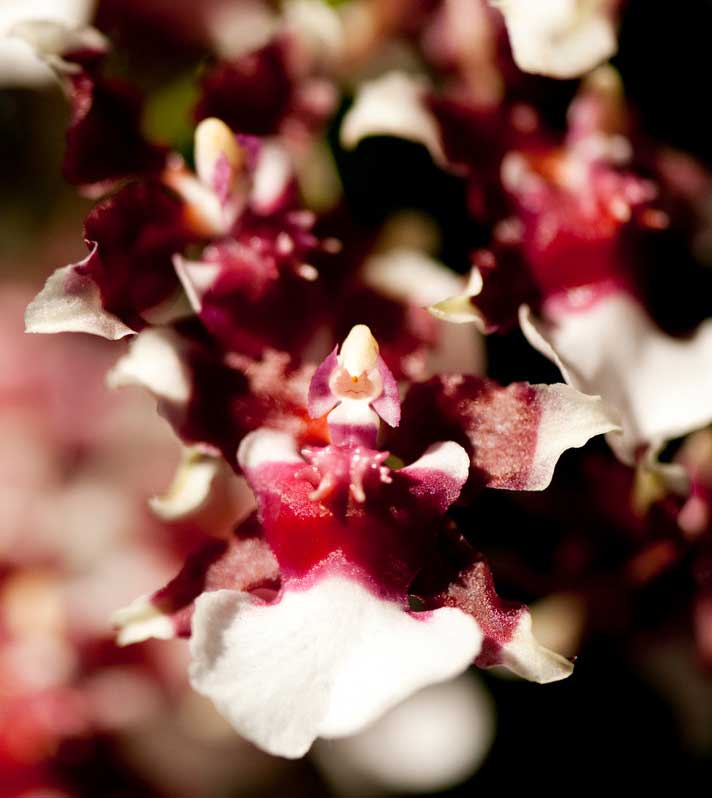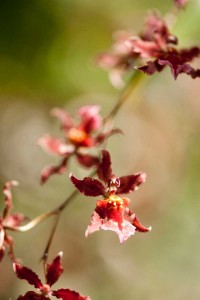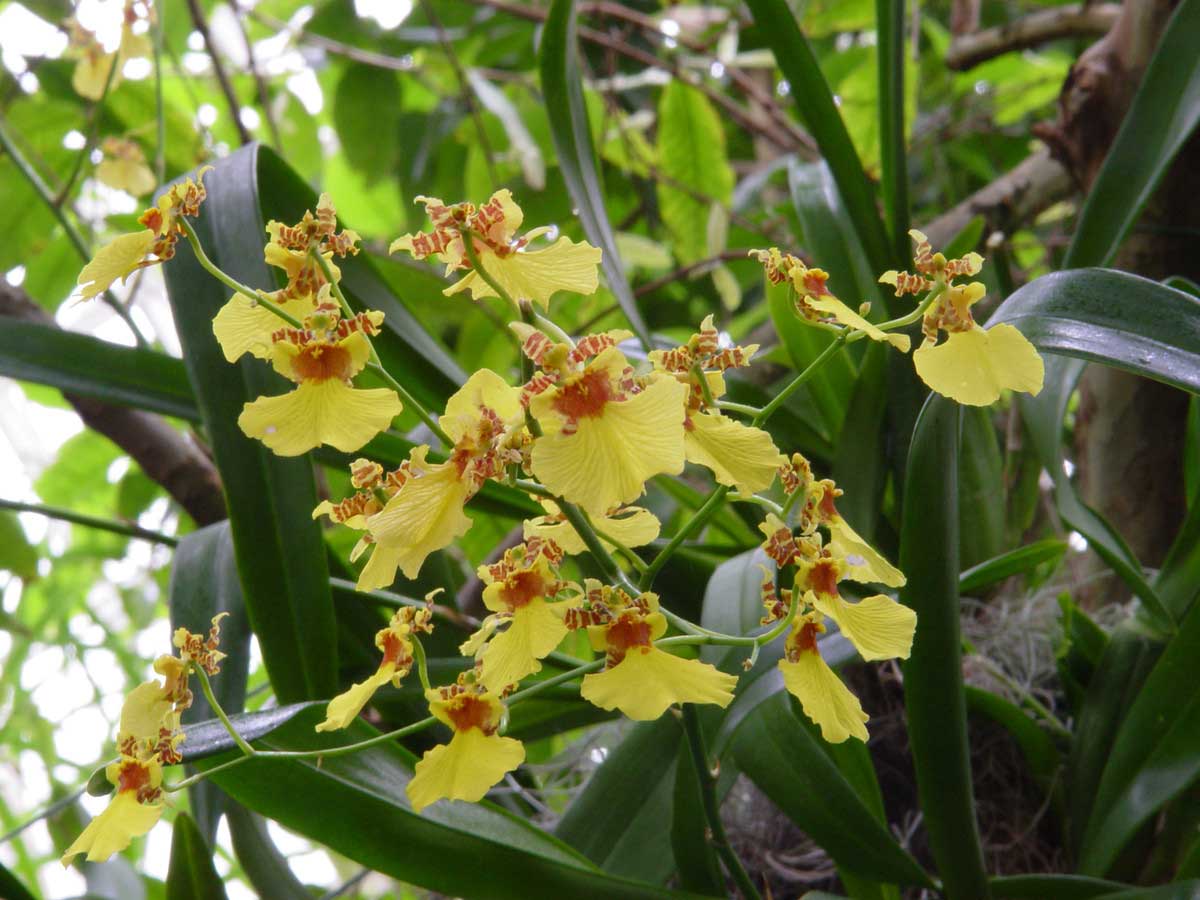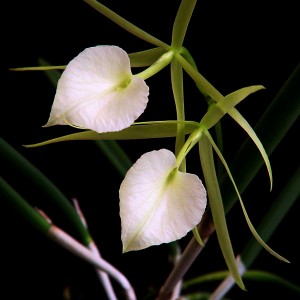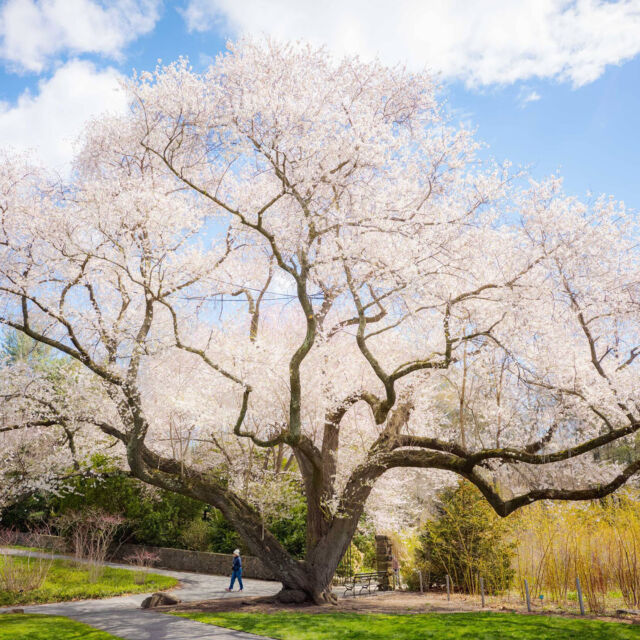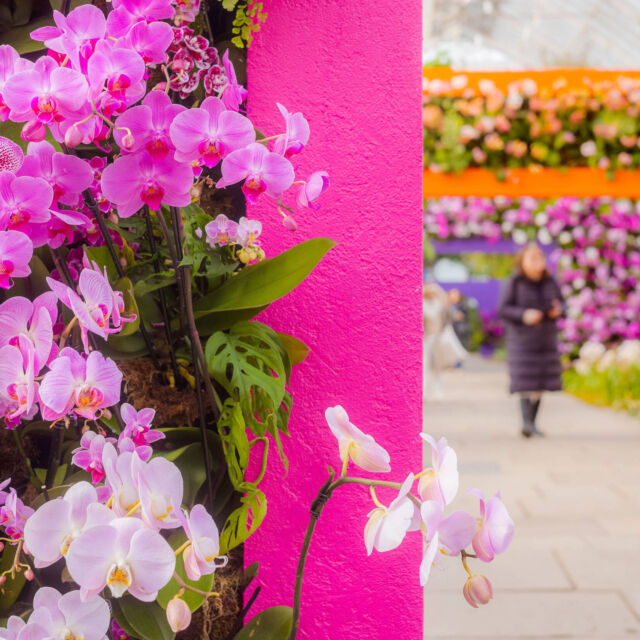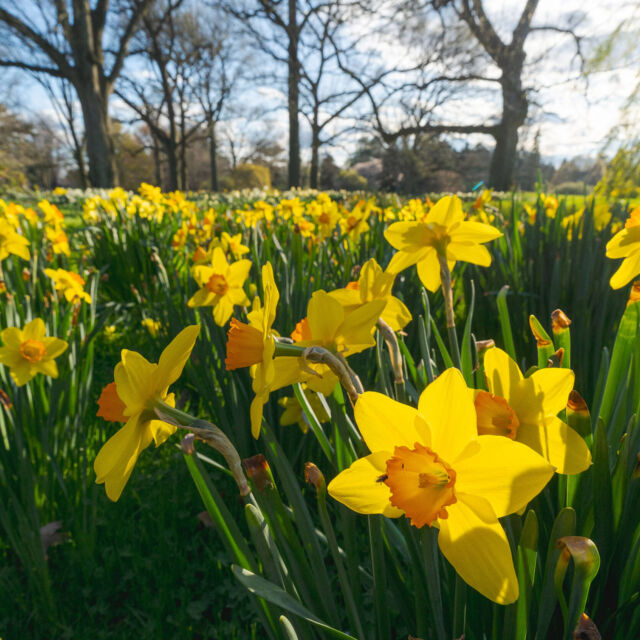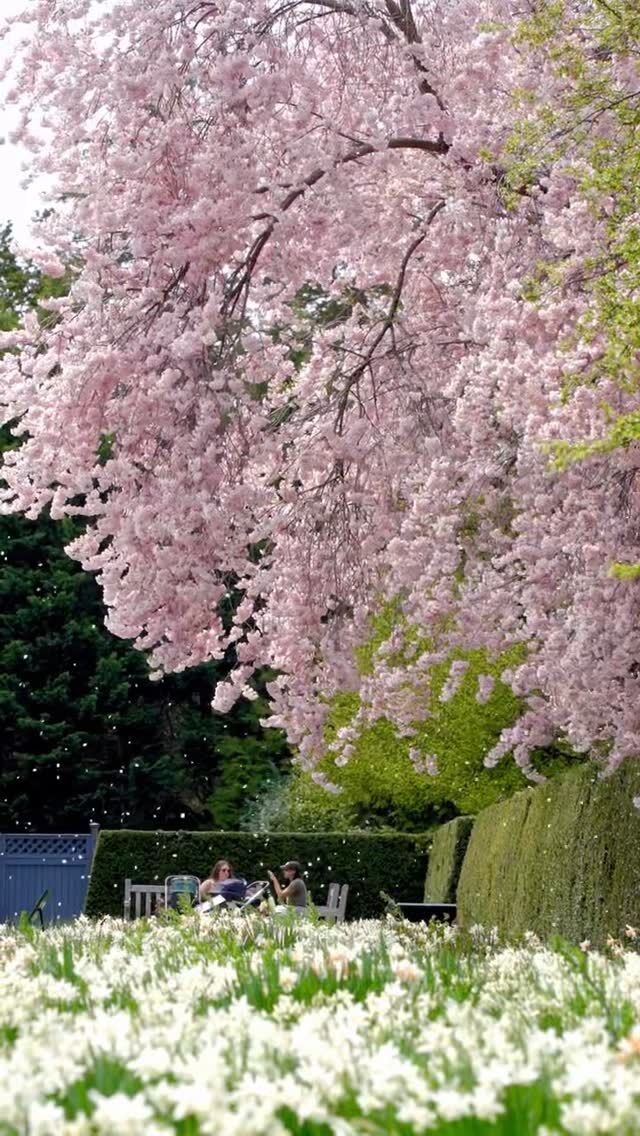Potted Perfume: Caring for Fragrant Orchids
Sonia Uyterhoeven is NYBG‘s Gardener for Public Education.
Every week I peruse Shop in the Garden to see what orchids they have in stock, and the selection this year has been stupendous. I received Oncidium ‘Sharry Baby’ (a.k.a. the chocolate orchid) from a grower and shared her powerful fragrance with a delighted audience. Fortunately, this in-demand orchid was available to purchase in the Shop, and every chocoholic in the audience went scurrying over to capture this odiferous orchid and take her home.
As the flowers on Oncidium ‘Sharry Baby’ began to wane, I got my hands on one of her progeny, Oncidium Heaven Scent ‘Redolence’. Heaven Scent ‘Redolence’ is the offspring of Oncidium ‘Sharry Baby’ and Oncidium ‘Ruffles’. Initially, she was not as pervasively pungent as her name would suggest. After a week of taunting me with the suggestion of a fragrance, she came into her own.
Oncidium, or dancing ladies, can have either no fragrance or a wonderfully enticing fragrance. The ones that have a fragrance are a treat for foodies. I have had the pleasure of sticking my nose in oncidiums that smell like chocolate, vanilla, and even mildly of coconut. Others are reminiscent of Hawaiian punch! As I passed Heaven Scent ‘Redolence’ around, members of the audience started referring to it as the “cookie orchid.” It reminded some of chocolate chip cookies, while others stated definitively that it had the aroma of an Oreo. Either way, you can’t go wrong.
Oncidiums prefer medium light levels and will fare well in any but a northern window. Give them some protection from hot afternoon sun. For watering, they like a good drenching and then to approach dryness. If you are not sure whether or not to water, stick a pencil down an inch into the mix and go make a cup of tea. When you return, check to see if the wooden tip of the pencil is moist or dry. If it is dry then you can water. Use tepid water when giving these orchids a drink. If the water is too cold and it gets on the foliage, ‘Sharry Baby’ and others will produce tiny black spots which look like freckles. Don’t worry, it is simply cosmetic damage and they have a genetic disposition to spotting.
Our priority is always to get these orchids to re-bloom. The best way to coax your orchid into bloom is to signal a season change. Drop the nighttime temperatures down to 60°F for several weeks and you have a good chance of encouraging a flower spike.
Another orchid which I had picked up from Shop in the Garden for my teaching was a beauty called Brassavola glauca (syn. Rhyncholaelia glauca). Caring for this little wonder is similar to caring for a brassavola or cattleya. They like high light levels and good air circulation. The thick foliage is a good indication that it needs to dry out in between watering. It does well mounted on cork bark or grown in slatted baskets.
The cattleya-shaped flower is a mix of apple green to creamy white. The large lip is ruffled and white. This orchid has a beautiful scent and is fragrant in the evening. White flowers with a nighttime fragrance indicate that its likely pollinator is a moth back in its native regions of Mexico and Guatemala. In order to get this orchid to flower, it is best to give it high light levels so that the leaves take on a slightly reddish tinge. Be sure to also cut back on your watering in the fall. Some of these orchids just need time to themselves and a little neglect from the gardener to coax it to flower.
During the show, if I have a fragrant orchid on hand, I always let the audience savor the aroma. One orchid that found its way to my table one weekend was a Masdevallia. Be aware that this is not an orchid for the beginner. Masdevallia prefer cool to intermediate temperatures and are happiest when night time temperature drops into the 50s. If the temperatures rise above 80ºF during the day, it will refuse to bloom.
Indigenous to cloud forests of Ecuador, Columbia, and Peru, this orchid not only wants it cool, but the humidity needs to be astronomically high. The bright and cheery flower is the reward. Some smell deliciously spicy, like carnations. Others, like the one I displayed, smell horrid. It was a cross between stinky old cheese and dirty socks. The pollinator it was trying to attract is a fly. Come join us this weekend for the finale of The Orchid Show!
SUBSCRIBE
Enter your email address to subscribe to this blog and receive updates on new posts.
